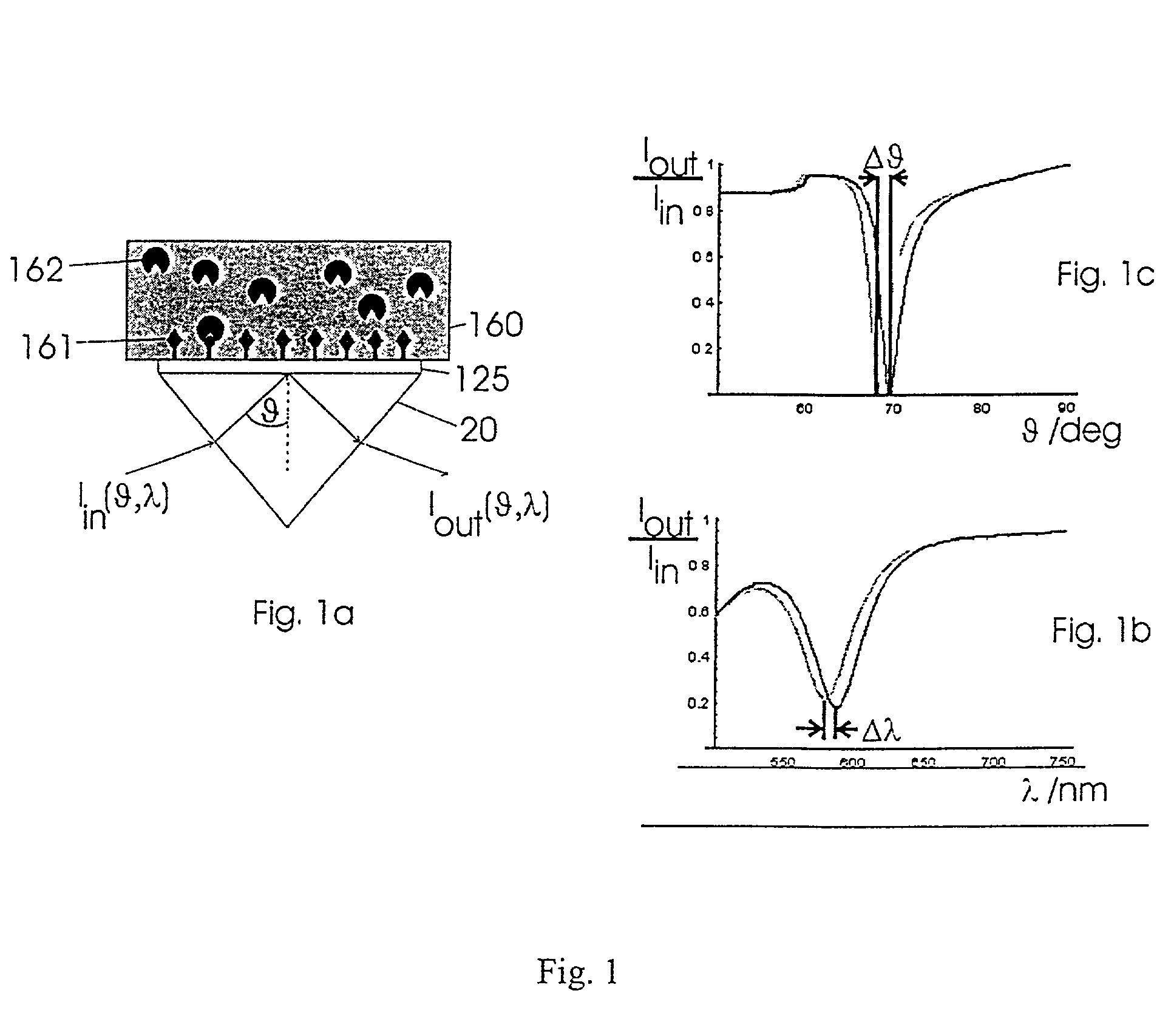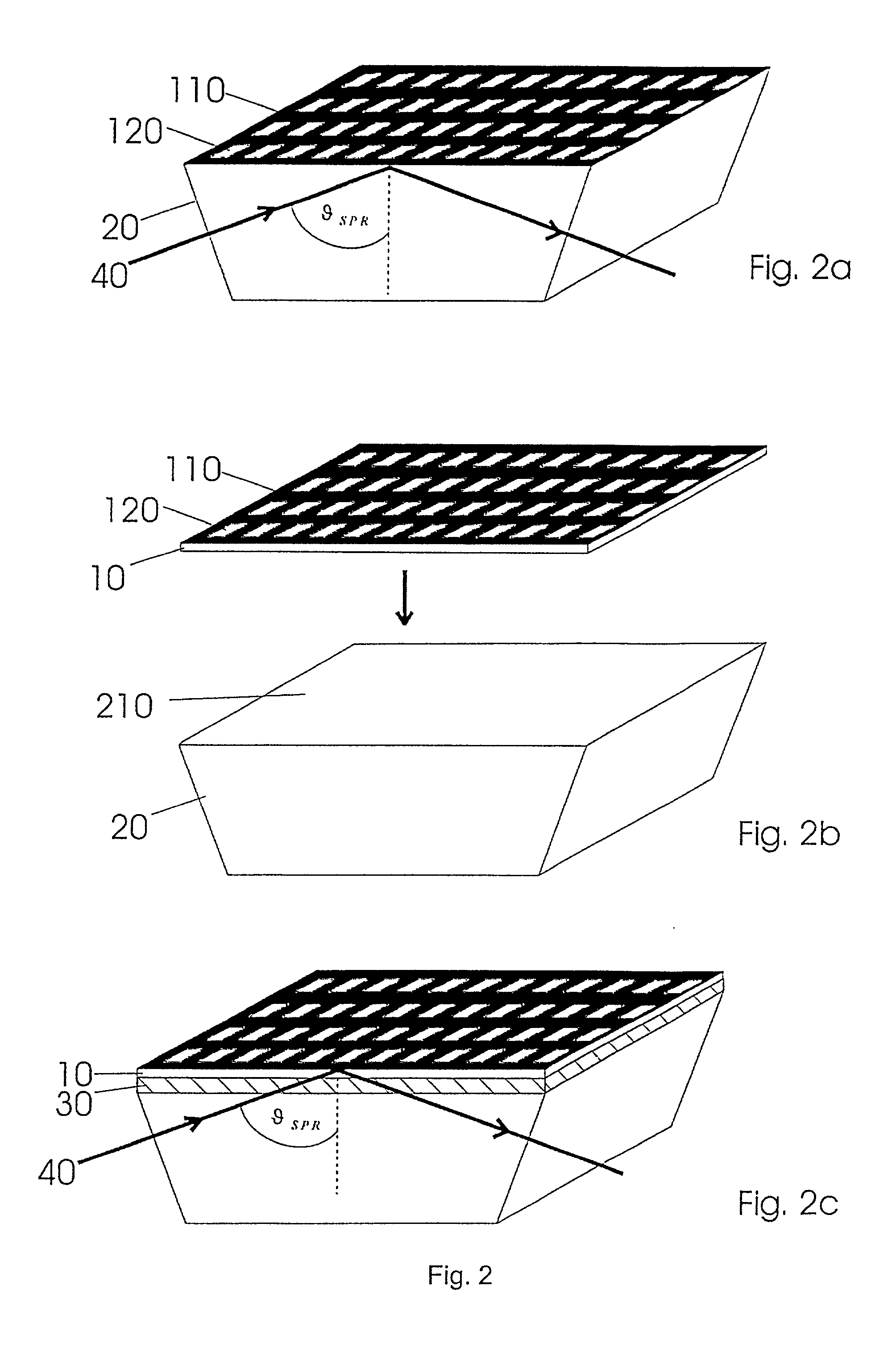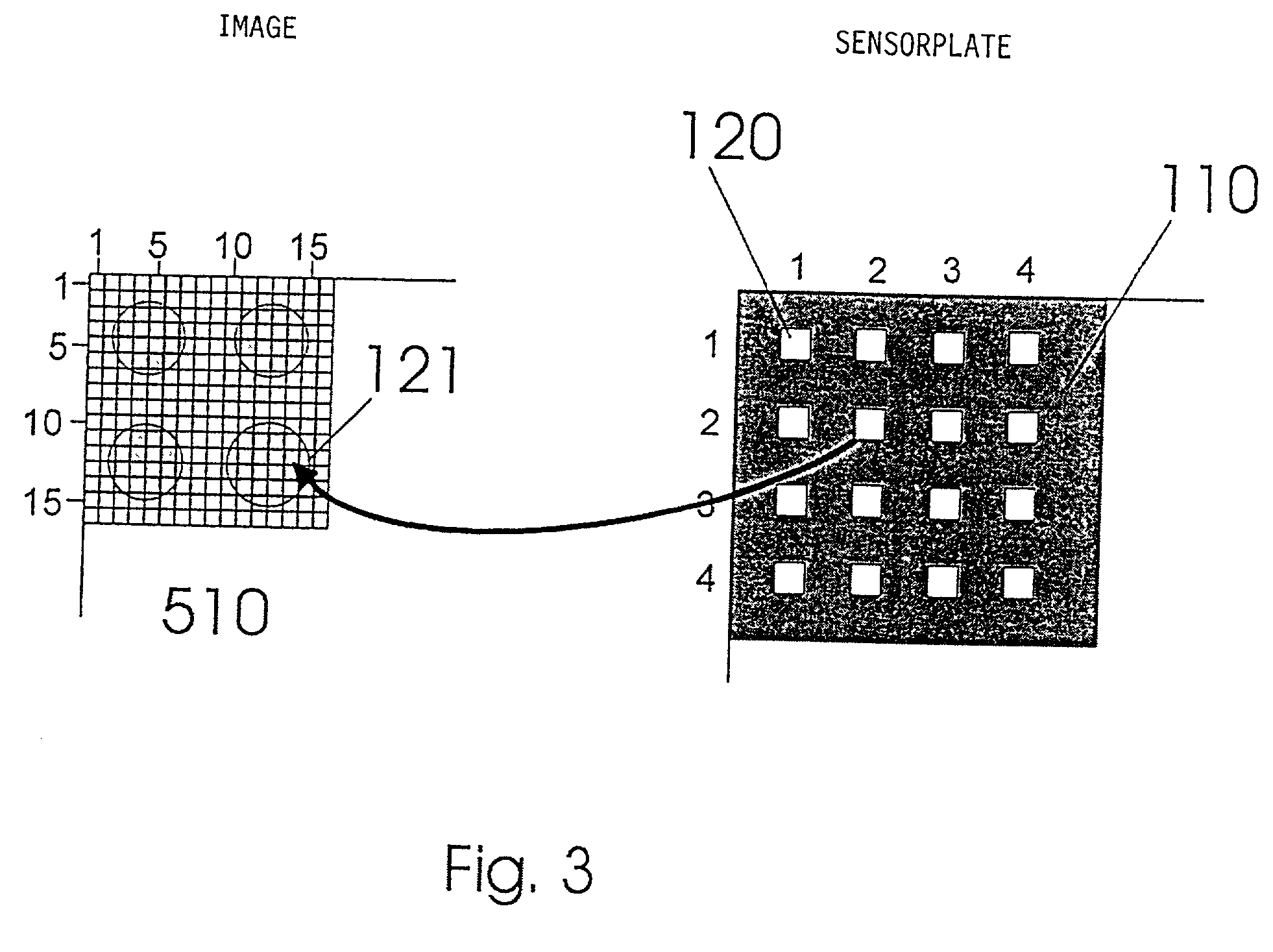SPR sensor system
a sensor and sensor finger technology, applied in the direction of material testing goods, instruments, analysis by subjecting materials to chemical reactions, etc., can solve the problems of high sample consumption, high cost of sensor fingers and their sensitiveness to physical contact, and the need for homogeneous surfaces on the surfa
- Summary
- Abstract
- Description
- Claims
- Application Information
AI Technical Summary
Benefits of technology
Problems solved by technology
Method used
Image
Examples
Embodiment Construction
[0075] FIG. 9a shows a detail (200.times.150 pixels) of an image of a sensor plate having a matrix of 562.5.times.1125 .mu.m.sup.2, as obtained with an optical assembly as described in the last paragraph. The size of the square sensor fields is 280.times.280 .mu.m.sup.2. With these dimensions approx. 12,000 sensor fields can be accommodated on the surface area of microtiter plate. Structuring the sensor plate was done with Ormocer to which graphite was admixed, the thickness of this layer being approx. 50 .mu.m. Imaging was done on a CCD chip 1024.times.1280 pixels large. As evident from the magnified view (FIG. 9b) a sensor field of roughly 5 pixels was available for detecting the reflection spectrum.
[0076] Referring now to FIG. 10 in conclusion there is illustrated a spectrum obtained from 5 pixels, the transmission of the monochromator still being superposed in this case. The quality of these spectra indicates an accuracy of 2 10.sup.-4 for detecting changes in the refractive ind...
PUM
 Login to View More
Login to View More Abstract
Description
Claims
Application Information
 Login to View More
Login to View More - R&D
- Intellectual Property
- Life Sciences
- Materials
- Tech Scout
- Unparalleled Data Quality
- Higher Quality Content
- 60% Fewer Hallucinations
Browse by: Latest US Patents, China's latest patents, Technical Efficacy Thesaurus, Application Domain, Technology Topic, Popular Technical Reports.
© 2025 PatSnap. All rights reserved.Legal|Privacy policy|Modern Slavery Act Transparency Statement|Sitemap|About US| Contact US: help@patsnap.com



